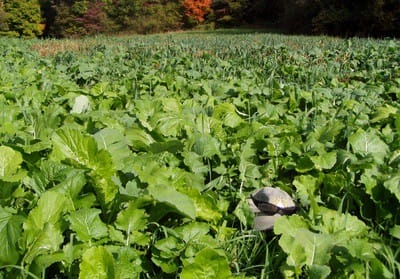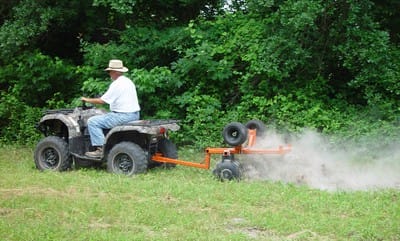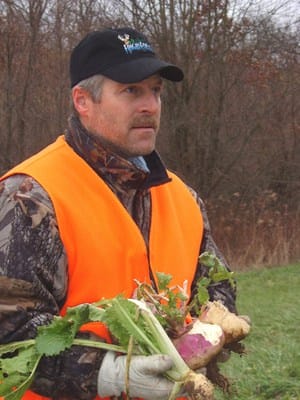
If you are a diehard deer hunter, you’ve probably planted a food plot of some kind. Food plots are more popular than ever and more hunters are investing hundreds of dollars into growing fields of corn, clover and the increasingly popular brassicas (like sugar beets and turnips). Instead of investing in new bows and guns, many hunters are purchasing ATV’s, tractors and farm machinery with the goal of planting food plots that big bucks can’t resist visiting year round. The problem, however is despite the blood sweat and tears that go into planting a plot, nothing is produced besides more tears when fall arrives and the plot looks more like a weed patch than a lush green farm field. In many cases, plots aren’t reaching their full potential because hunters aren’t using enough lime on their plots.
Jeff Neal of Heartland Wildlife Institute, a food plot company in Ohio, knows why many people overlook the important step of adding lime to their food plot because he plants dozens of food plots every year on his hunting ground.
“Many hunters ignore spreading lime or don’t spread enough of it because it’s a costly, time-consuming process,” Neal said. “Many hunters don’t realize that it’s a very important step in ensuring that their plot produces a good crop.”

Lime is a critical part of a food plot because if your soil isn’t at the proper pH level, usually around seven, the crops you plant can’t get all of the nutrients out of the soil or fertilizer you spread. Steve Gruber, a food plot expert who lives in Minnesota says crops don’t do well in an acidic environment.
“When soil is acidic, plants don’t get all of the nutrients out of the soil that they would if the soil had the proper pH,” Gruber said. “In many cases, this means that the fertilizer is going to waste because the plants won’t gain as much from it. If deer hunters want to get the most out of the fertilizer they’re spreading, they must first use lime so the crops can utilize all of the nutrients from the ground and fertilizer.”
In many cases, Gruber said people don’t understand how acidic their soil is. Many people perform a soil test which says their soil has a pH of 5 or 6. They assume that the soil is “good enough.”
Unfortunately, this isn’t the case. “A soil test with a pH of 6 means that it is actually 10 times more acidic than soil with a PH level of 7 which is what you want,” Gruber said. “If the soil has a pH of 5, it is actually one hundred times more acidic than soil with a PH of 7. This means that a lot of lime will be needed to get the soil where it needs to be so crops can prosper.”
Many hunters who plant food plots purchase a few bags of lime spread it out on the field they plan on planting with a shovel and call it good. However, it won’t be good enough!

“In many cases, several tons of lime is needed per acre to bring the pH to its proper level—this often means several truckloads,” Gruber said. This creates a problem for hunters who don’t have commercial spreaders to spread lime.
“If hunters don’t have an effective way to spread lime, I suggest renting a bobcat or putting the lime in the back of a pickup. They can have one guy in the back pitching it over the side with a shovel,” Gruber suggested.
On the other hand, Neal says that paying a farmer to spread it is one way to get the job done quickly.
“In several cases, I think the easiest way to get the job done quickly is to hire it done,” Neal said. Farmers purchase lots of lime and in many cases, you can purchase it from them and have it spread for about $25 a ton. “Doing it this way can save money and get the job done quickly,” Neal said.
If you don’t have lots of money to spend on a plot, you can plant a seed blend that is hearty and can handle acidic soil so you won’t need as much lime. Heartland makes a variety of Heart Blends, like the Buck Buster Brassica which can handle a more acidic soil. However, when all is said and done, for a plot to reach its full potential, lime should be used because it helps the plants take in all the nutrients they need to grow. Without lime, most food plots will suffer.



